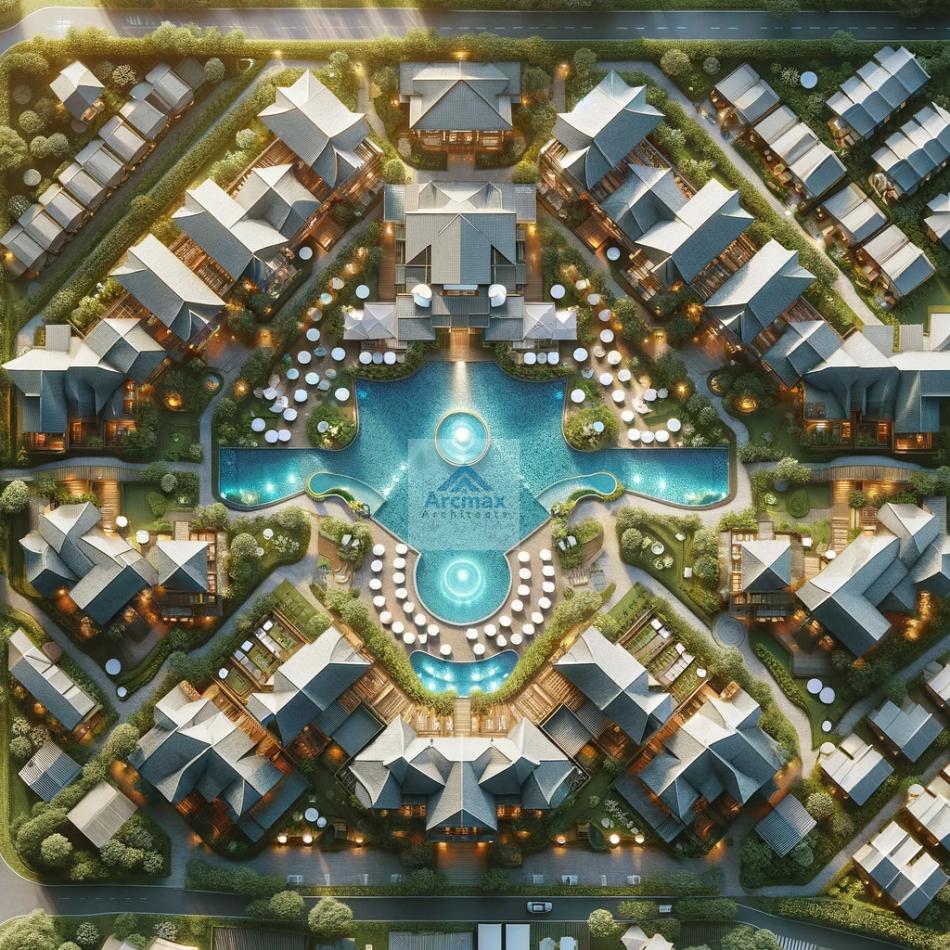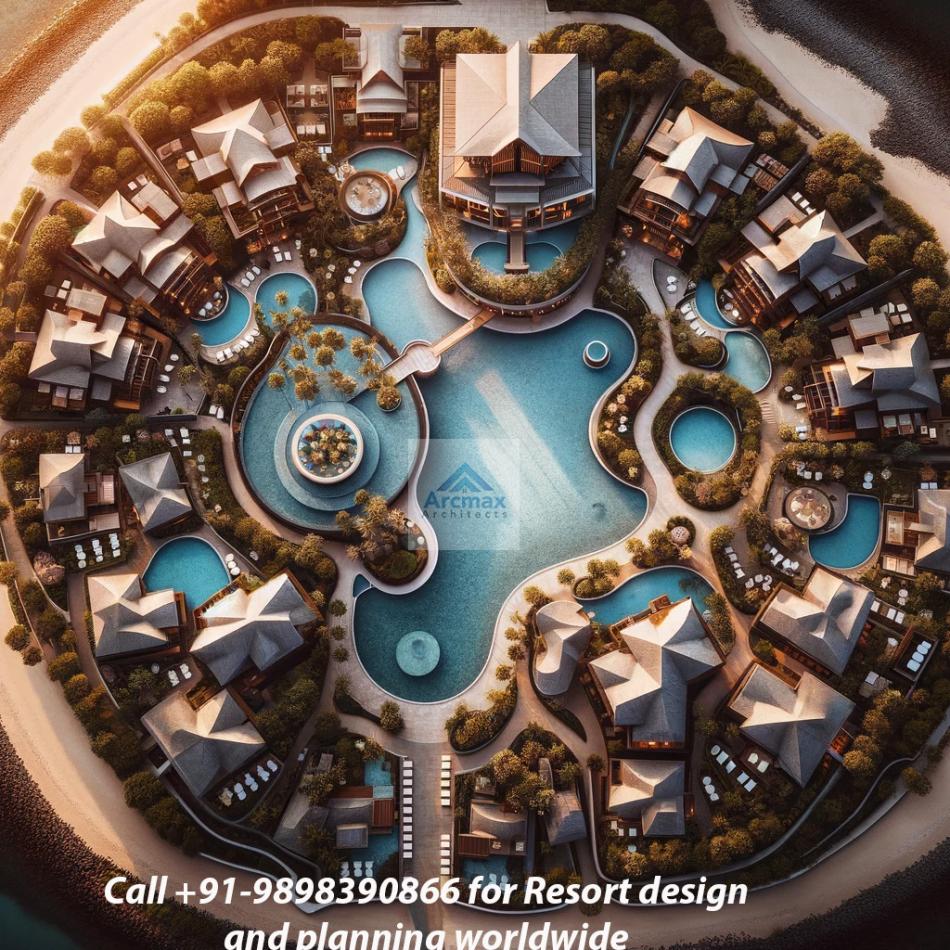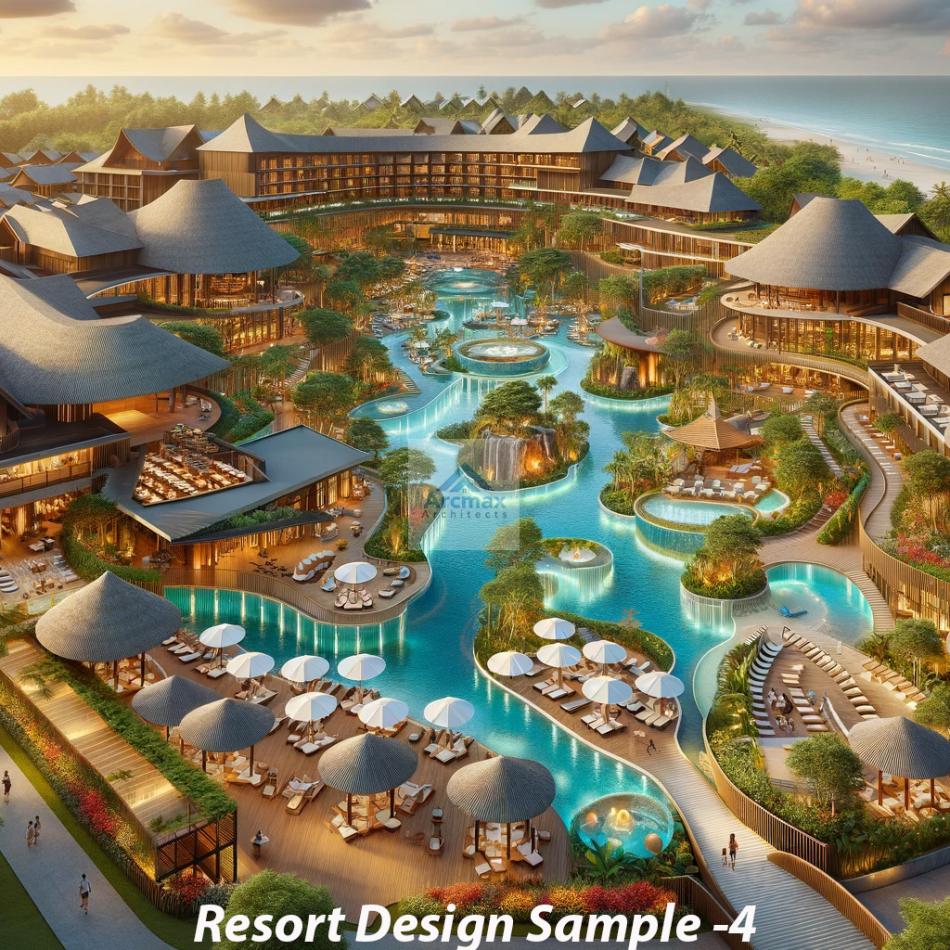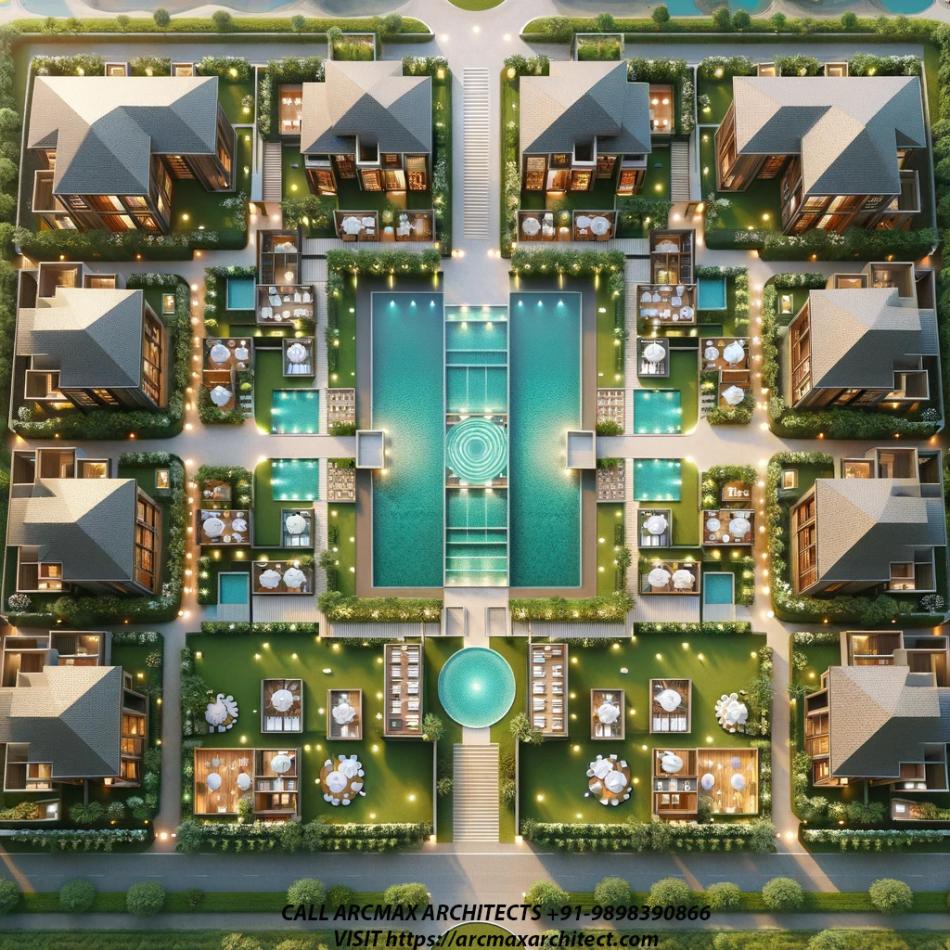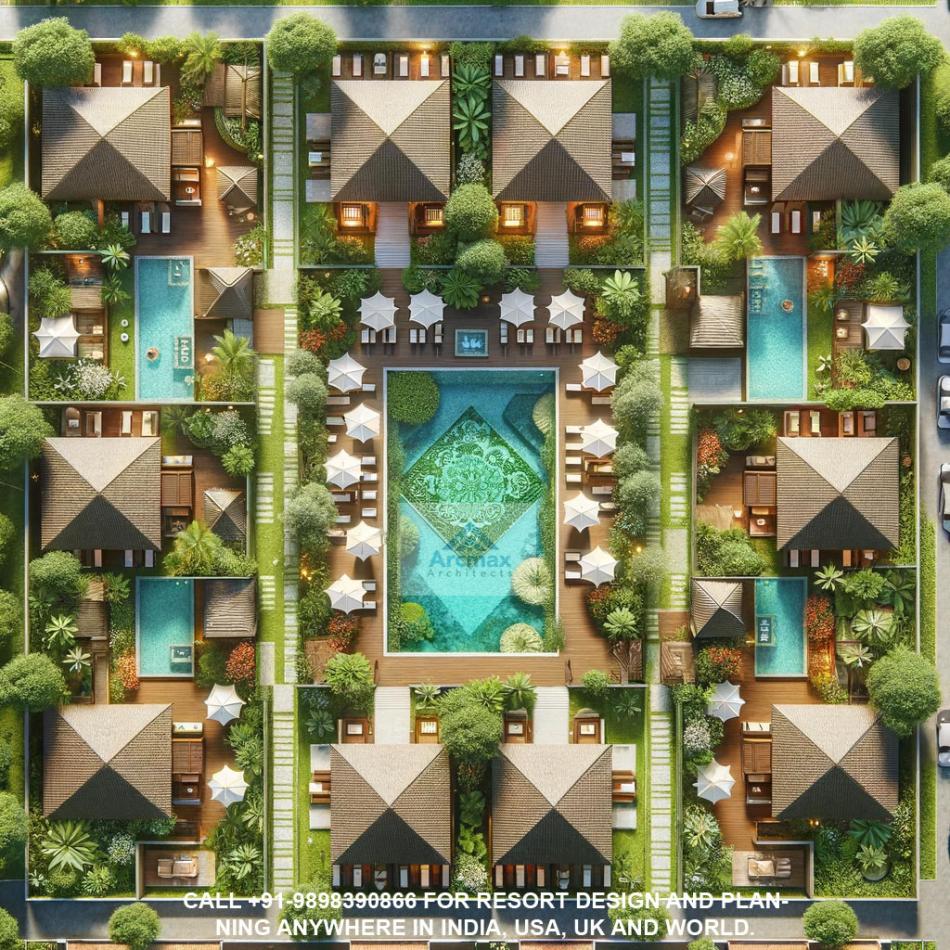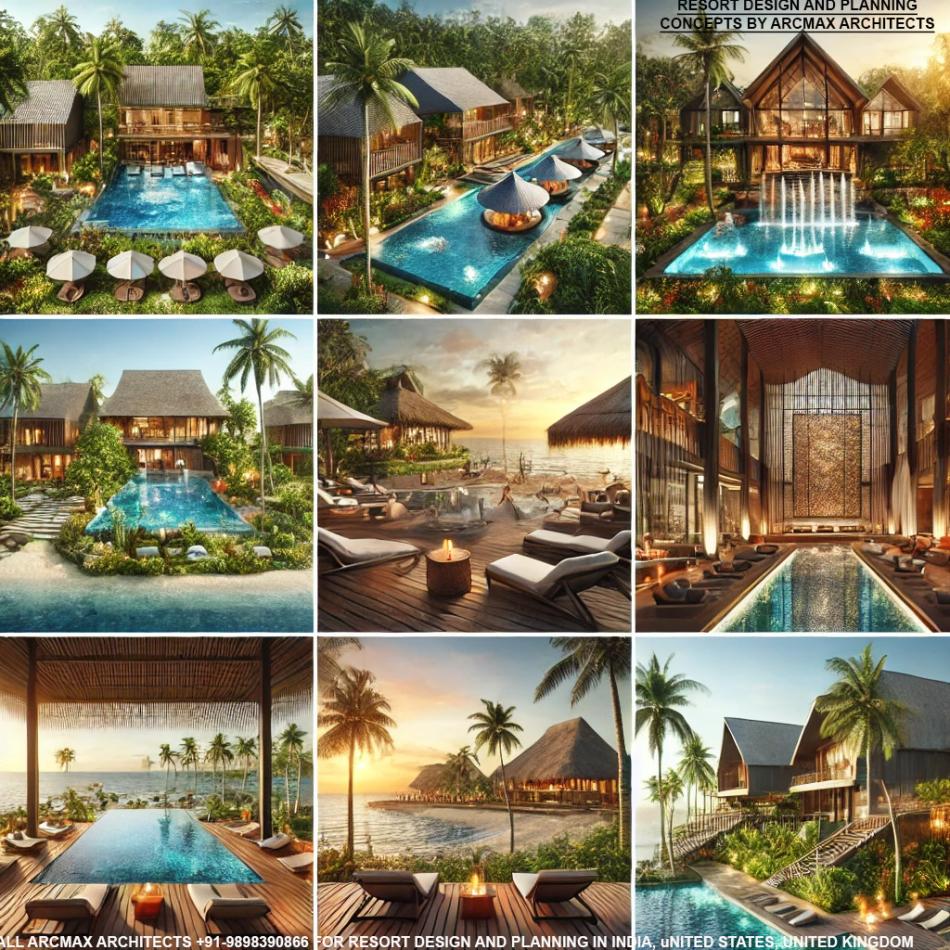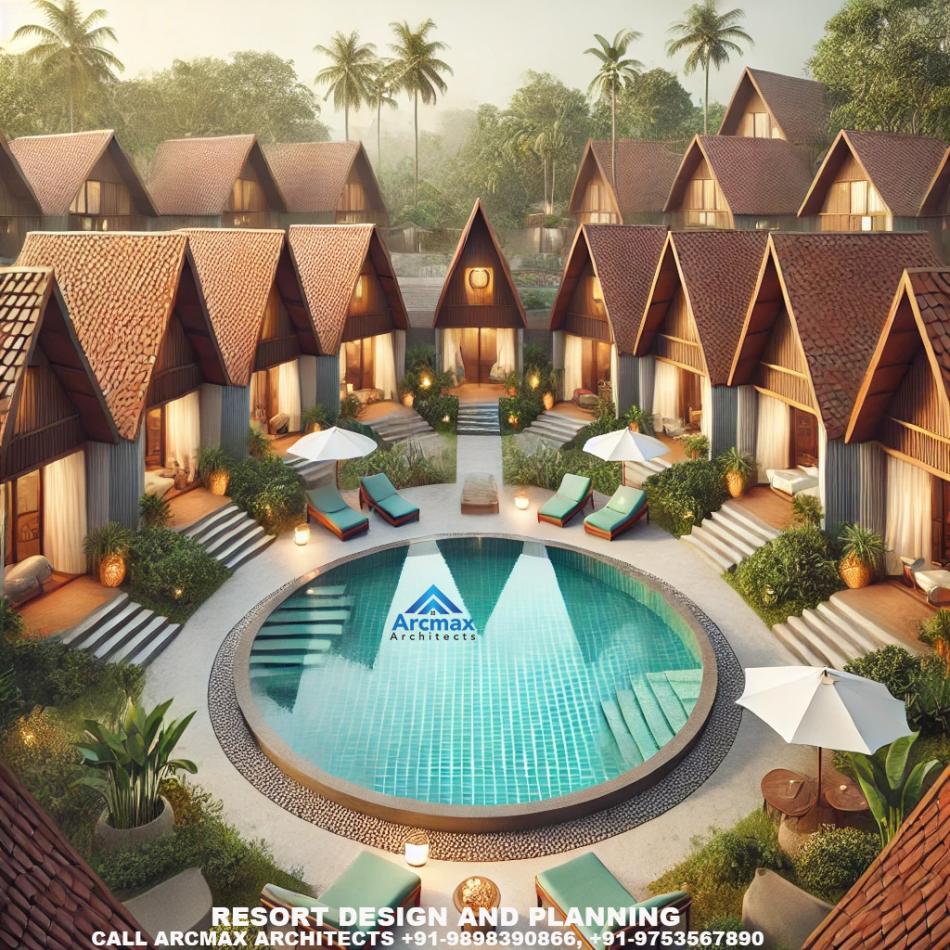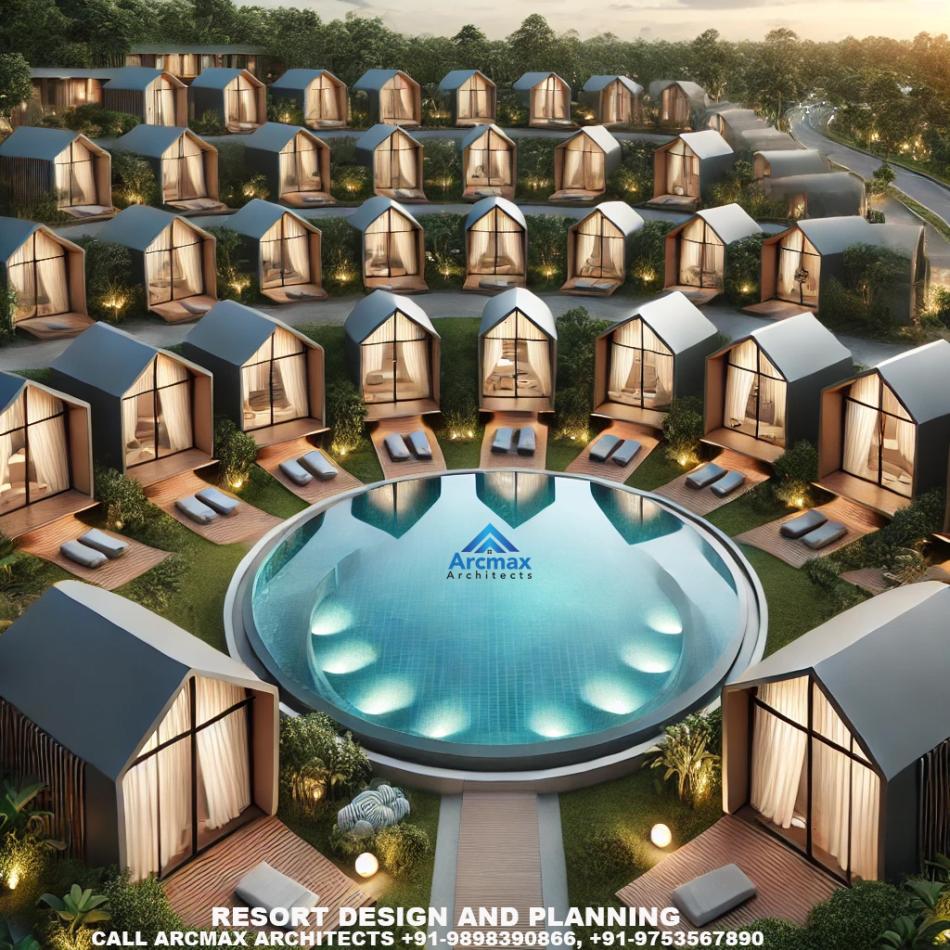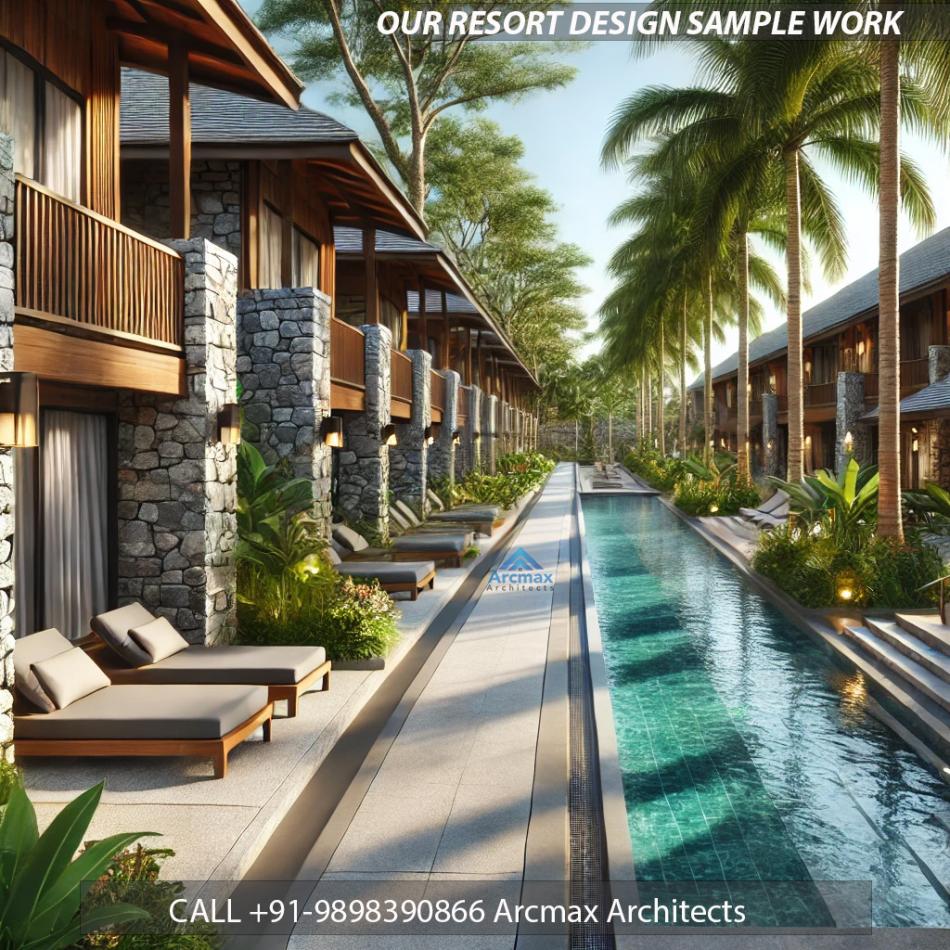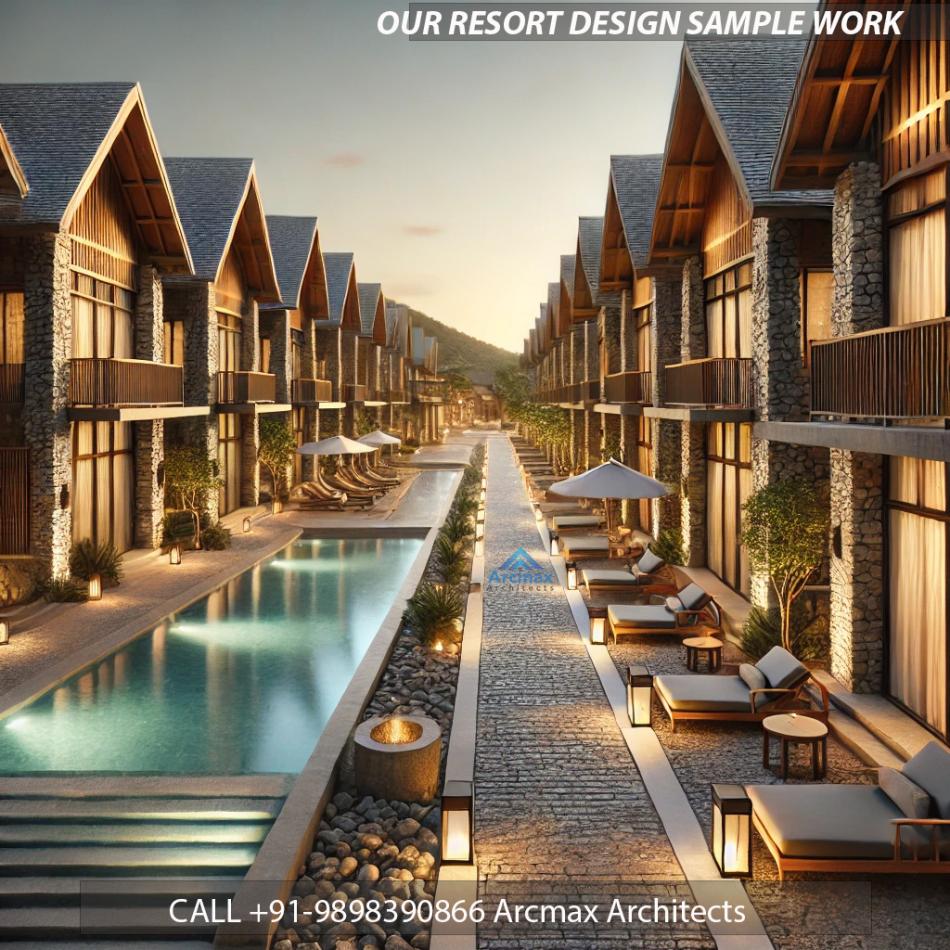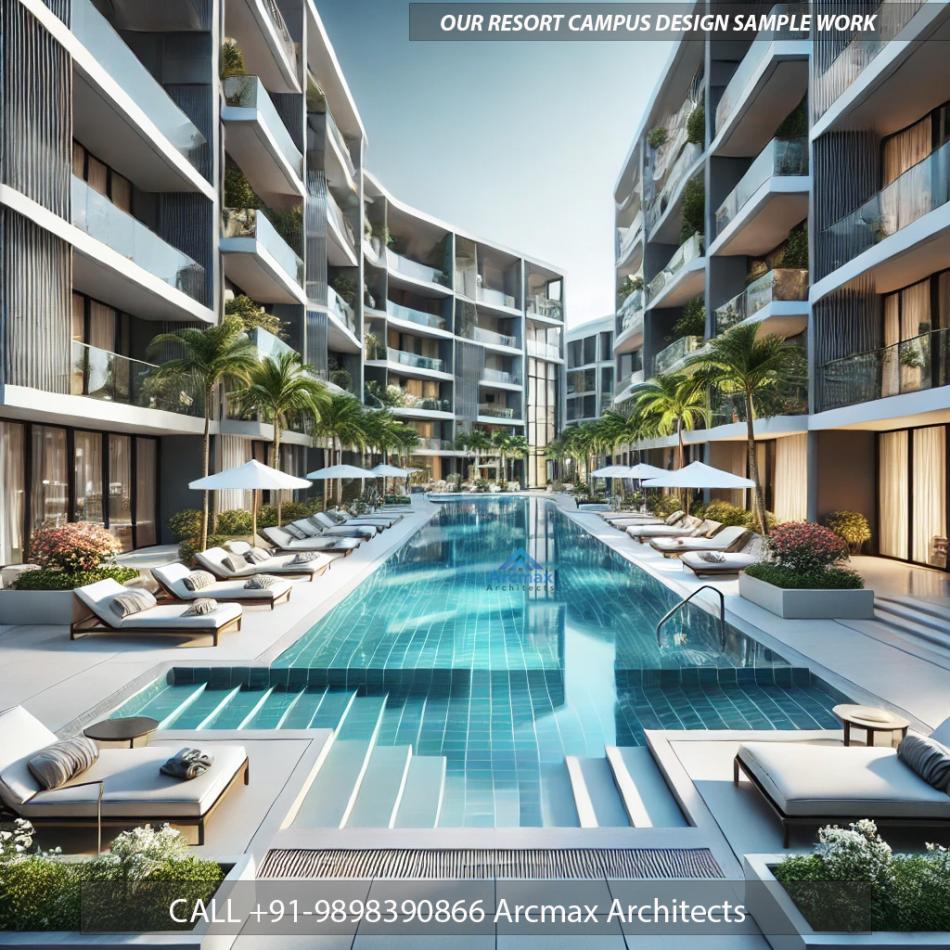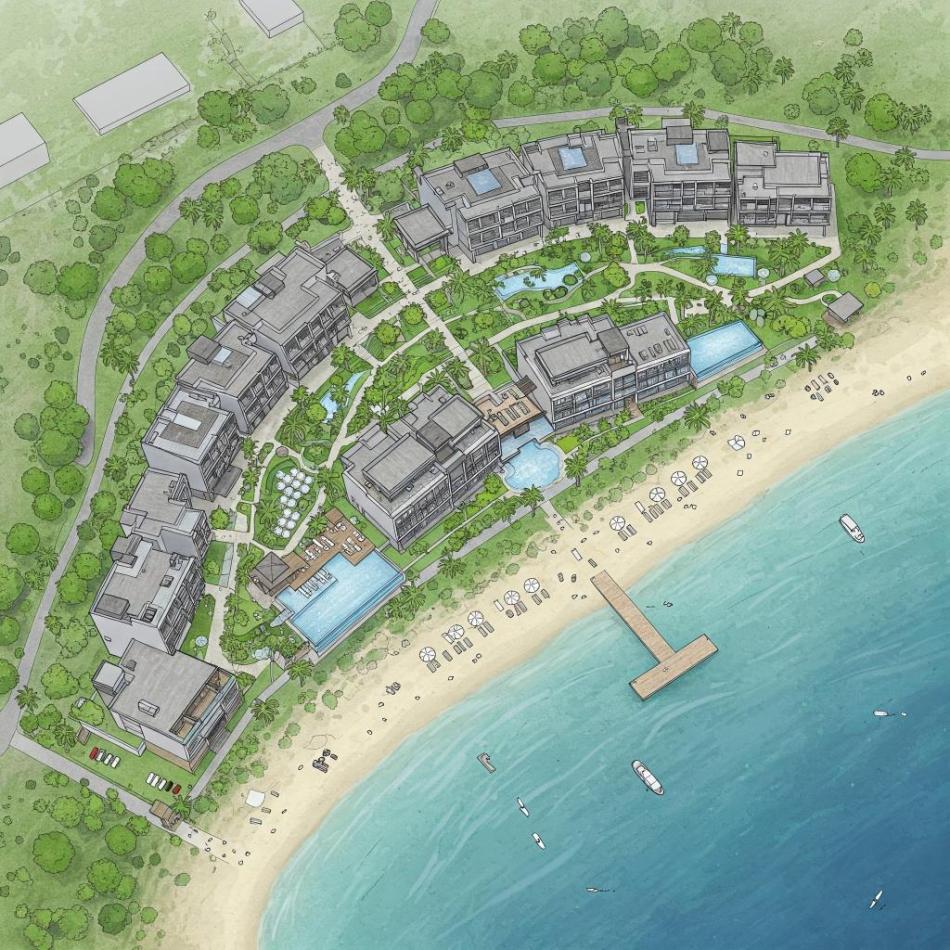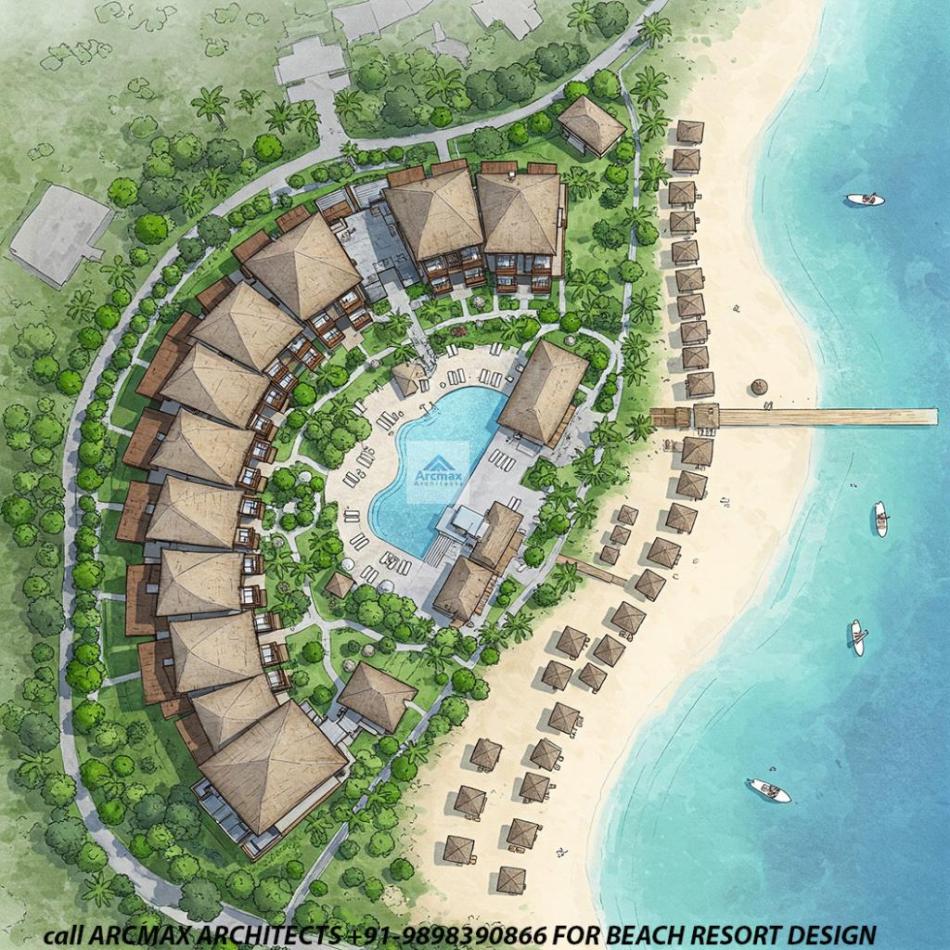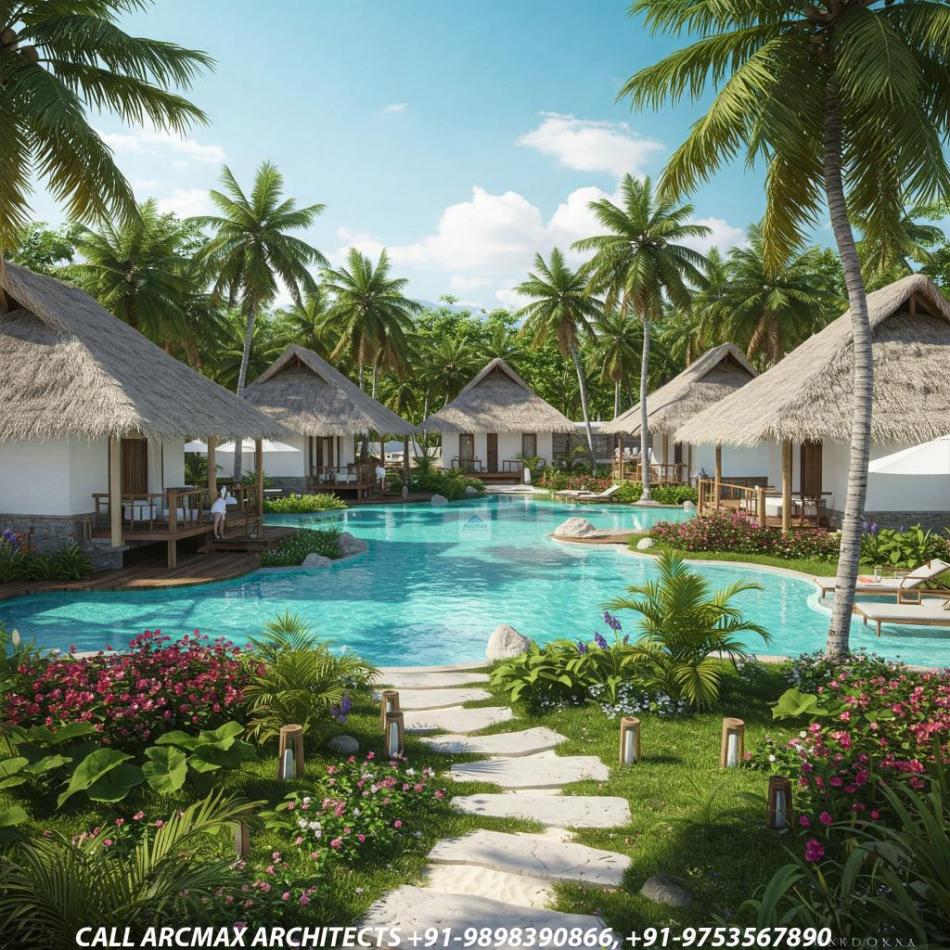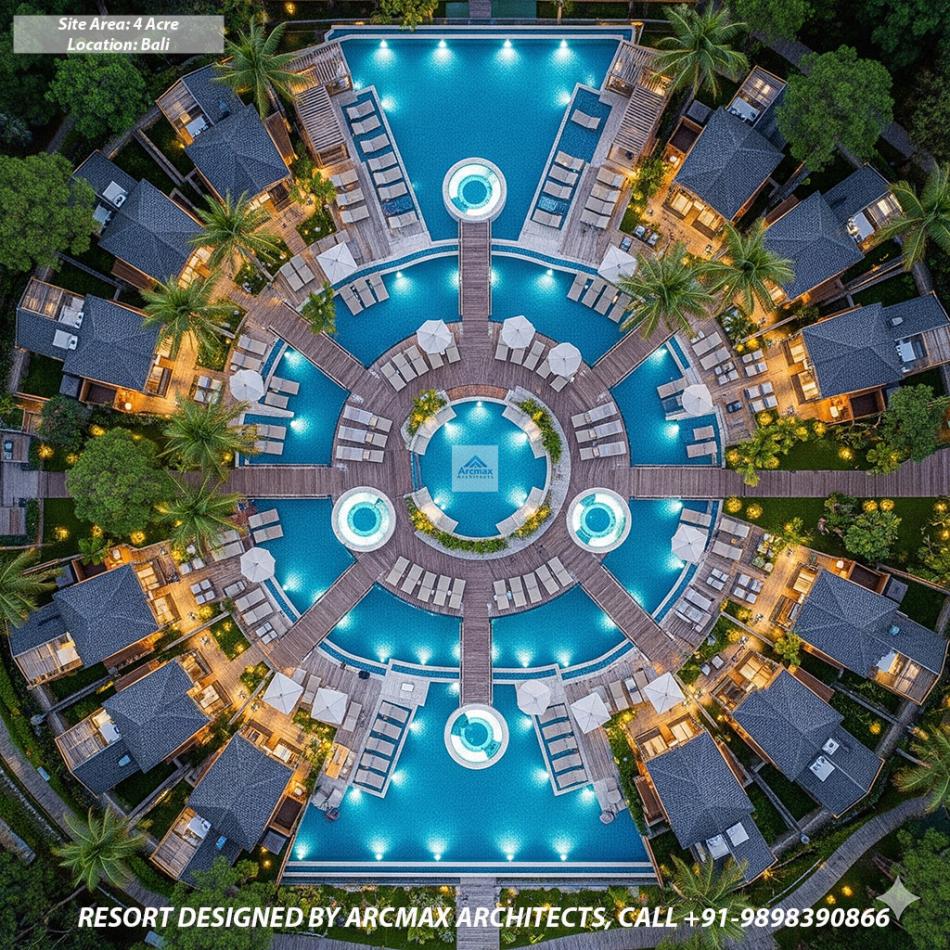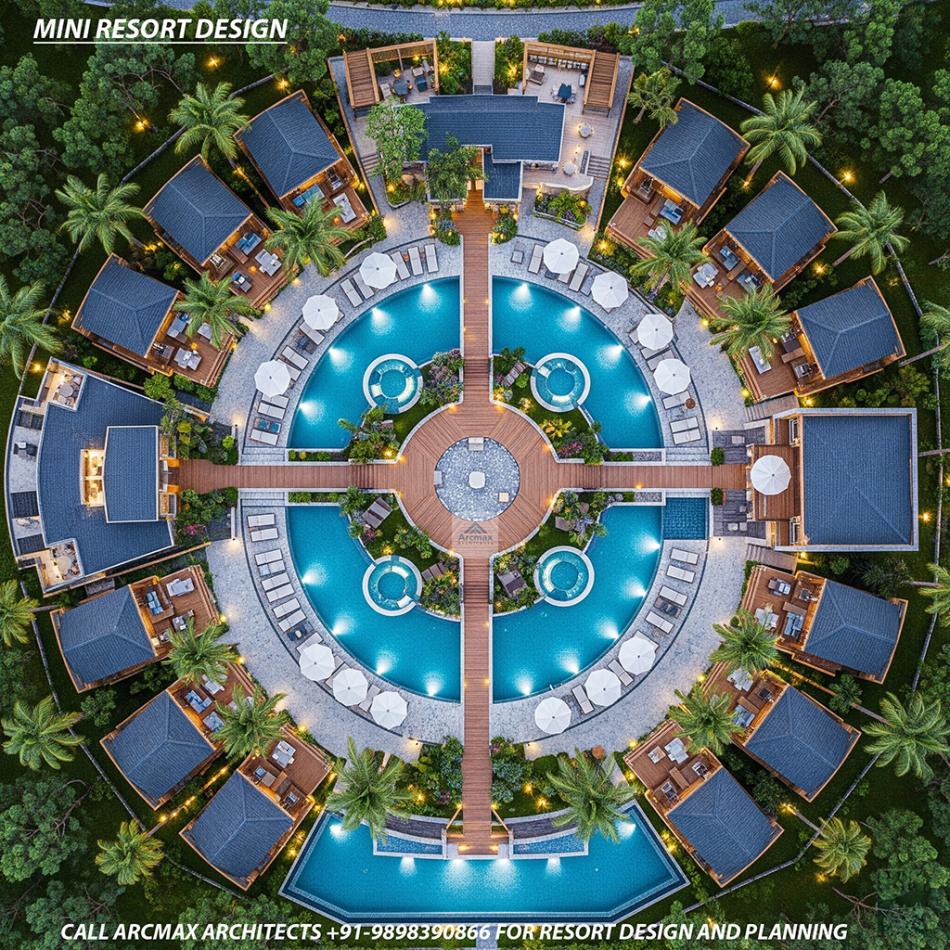Bakeri City, Pincode: 380015 Ahmedabad, Gujarat, India,
244 Madison Avenue, New York, United States
Our Client




The Ultimate Guide to Designing a Health and Wellness Resort
The Ultimate Guide to Designing a Health and Wellness Resort: By Arcmax Architects, call +91-9898390866 for Health and wellness resort design and planning worldwide
The Ultimate Guide to Designing a Health and Wellness Resort:
In today’s fast-paced world, travelers are increasingly looking for destinations that offer restoration, rejuvenation, and holistic well-being. This is where health and wellness resorts step in—integrating nature, architecture, and therapy into one seamless experience. Designing such a resort requires a thoughtful blend of aesthetic beauty, medical wellness infrastructure, and hospitality comfort.
This ultimate guide explores the key principles, design elements, and planning strategies that go into building a world-class health and wellness resort.
Step 1: Define the Wellness Concept
The first step in resort design is to define the core philosophy of wellness. Are you focusing on Ayurveda and yoga, spa therapies, medical wellness, or a holistic lifestyle retreat? Each concept shapes:
The architecture style (eco-villas, modern luxury suites, or traditional cottages).
The amenities (yoga pavilions, meditation halls, thermal pools).
The target audience (domestic, international, or medical tourists).
Step 2: Choose the Right Location
Location is the soul of a wellness resort. Ideal sites include:
Hills and forests for nature immersion.
Lakeside or riverside for tranquility.
Countryside estates for privacy and exclusivity.
Accessibility to airports or major cities also matters for attracting international guests.
Step 3: Master Planning the Campus
A health and wellness resort masterplan balances privacy, open spaces, and functional amenities. Essential components include:
Wellness accommodation – Villas, cottages, or suites designed for serenity.
Spa and therapy zones – Hydrotherapy pools, massage rooms, Ayurveda treatment areas.
Fitness and yoga spaces – Open-air yoga decks, gymnasiums, meditation halls.
Nutrition-focused dining – Organic farm-to-table restaurants, herbal tea lounges.
Green landscaping – Walking trails, gardens, reflexology paths.
Service areas – Staff housing, storage, and back-of-house facilities carefully hidden from guests.
Step 4: Architecture & Interior Design
The design of a wellness resort must connect mind, body, and environment. Key considerations:
Use natural materials like stone, bamboo, and timber.
Large windows for daylight and cross-ventilation.
Soft, earthy color palettes for relaxation.
Minimalist yet luxurious interiors with focus on natural textures.
Soundproofing and privacy zoning for therapy rooms.
Step 5: Sustainability in Design
A health and wellness resort should reflect a sustainable lifestyle. Popular eco-practices include:
Solar power and energy-efficient HVAC systems.
Rainwater harvesting and greywater recycling.
Organic farming within the resort campus.
Use of locally sourced building materials.
These practices reduce costs while appealing to eco-conscious travelers.
Step 6: Guest Experience & Flow
The guest journey must feel effortless and healing. From check-in to check-out, circulation paths should ensure:
Easy navigation from villas to spa areas.
Secluded meditation corners.
Scenic walking trails connecting different zones.
Accessibility for differently-abled guests.
Step 7: Wellness Programs & Services
Architecture must complement services offered. Popular wellness programs include:
Detox and weight management retreats.
Yoga and meditation packages.
Stress-relief and corporate wellness programs.
Medical wellness offerings with diagnostic labs and recovery suites.
Step 8: Branding & International Appeal
To attract global wellness travelers, resorts must reflect:
Authentic local culture (Ayurveda in India, Nordic wellness in Europe, spa traditions in Japan).
Partnerships with international wellness brands.
Digital marketing with wellness storytelling—emphasizing health benefits, lifestyle transformation, and natural experiences.
Designing a health and wellness resort requires more than just architectural expertise—it demands sensitivity to human psychology, lifestyle aspirations, and cultural values. By blending sustainable architecture, serene landscapes, and wellness-focused amenities, developers can create world-class destinations that leave lasting impressions on guests.
If you’re planning a health and wellness resort, Arcmax Architects provides comprehensive services from concept design and campus layout planning to 3D renderings and investor presentations for global clients.
Call: +91-9898390866, +91-9753567890
Email: arcmax78@gmail.com | contact@arcmaxarchitect.com
Visit: https://arcmaxarchitect.com
In today’s fast-paced world, wellness tourism is booming. More people are seeking refuge in health and wellness resorts that promise rejuvenation, relaxation, and a holistic healing experience. If you're considering designing a health and wellness resort, Our Detailed guide will walk you through essential aspects to create a haven that attracts and retains wellness seekers.
1. Understanding the Concept of a Wellness Resort
A health and wellness resort is a retreat that focuses on physical, mental, and emotional well-being. It offers a combination of therapies, activities, and experiences designed to enhance guests' health. These resorts typically include spa treatments, fitness programs, nutritious cuisine, mindfulness practices, and nature-driven experiences.
2. Selecting the Right Location
Location plays a crucial role in the success of a wellness resort. The best locations are often surrounded by nature, offering scenic landscapes, fresh air, and a serene ambiance. Consider beachfronts, mountains, forests, or countryside settings that promote relaxation and tranquility.
Key Factors to Consider:
Climate: Favorable weather conditions enhance the wellness experience.
Accessibility: Ensure easy access for guests while maintaining seclusion.
Natural Elements: Waterfalls, rivers, and greenery enhance the therapeutic environment.
3. Architectural and Interior Design Elements
Sustainable and Eco-Friendly Design
Sustainability is a major trend in wellness tourism. Utilize eco-friendly building materials, renewable energy sources, and sustainable water management systems.
Expertise from Arcmax Architects: call +91-9898390866
For an exceptional wellness resort design, collaborating with experienced architects is crucial. Arcmax Architects specializes in designing health and wellness resorts with innovative, sustainable, and functional architectural solutions. With a deep understanding of eco-friendly structures and holistic spatial planning, Arcmax Architects can help bring your vision to life.
Aesthetic and Functional Spaces
Open Spaces: Encourage natural light and ventilation.
Minimalistic Decor: Promote calmness and relaxation.
Soundproofing: Ensure tranquility by reducing noise pollution.
4. Wellness Facilities and Services
Spa and Holistic Therapies
A high-quality spa is the heart of any wellness resort. Offer diverse treatments such as:
Ayurvedic therapies
Aromatherapy
Hydrotherapy
Massage therapy
Fitness and Recreation
Provide diverse options for physical activity, including:
Yoga and meditation centers
Hiking and nature trails
Swimming pools and water therapy areas
Gyms and personal training sessions
Nutritious and Organic Dining
A wellness resort should prioritize wholesome, nutritious food. Design a menu featuring:
Farm-to-table ingredients
Organic and plant-based options
Detoxifying beverages and herbal teas
5. Creating Unique Experiences
Guests seek memorable and transformative experiences. Consider incorporating:
Cultural Immersion: Local traditions, arts, and healing practices.
Digital Detox Programs: Encourage guests to disconnect from technology.
Customized Wellness Plans: Personalized programs catering to individual health needs.
6. Marketing and Branding Your Wellness Resort
Building a Strong Brand Identity
Define Your Unique Selling Proposition (USP): What makes your resort different?
Engage on Social Media: Share wellness tips, behind-the-scenes content, and guest testimonials.
Collaborate with Influencers and Wellness Experts: Leverage their networks to attract more visitors.
Offering Packages and Memberships
Create seasonal retreats, loyalty programs, and group packages to enhance customer engagement and encourage repeat visits.
Designing a health and wellness resort requires a deep understanding of holistic well-being, sustainability, and guest experience. By incorporating the right location, eco-friendly architecture, wellness services, and unique experiences, you can create a sanctuary that fosters healing, relaxation, and transformation.
Are you planning to build a wellness retreat? Hire Arcmax Architects +91-9898390866 for Health and wellness resort design and Planning anwyhere in india, USA, UK and south africa.


